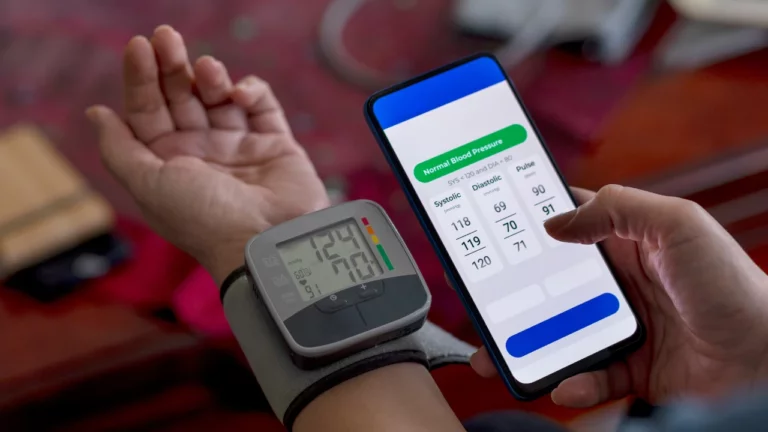Iron deficiency anemia occurs when your body does not have enough iron. Anemia affects almost a quarter of the world’s population. Iron deficiency is the most prevalent cause of anemia, accounting for 50% of all cases. In underdeveloped nations, iron deficiency is more prevalent than in the United States, where 1 percent of men under 50 have iron deficiency anemia. In the United States, 10% of women of childbearing age are iron deficient due to menstrual losses, and 9% of children aged 12 to 36 months are iron deficient, with one-third developing anemia. Even though iron deficiency anemia is rare in the U.S., low-income families are more likely to get it.1)
What are the symptoms of iron deficiency anemia?
Iron deficiency anemia symptoms might be subtle at first, and you may not even notice them when you have the mild form. Most people don’t realize they have moderate anemia until they get an abnormal blood test. The following are some of the symptoms of moderate to severe iron deficiency anemia:
- General exhaustion
- Weakness
- Pale complexion
- Breathing problems
- Dizziness
- Unusual desires to consume non-nutritional foods
- A sensation of tingling or creeping in the legs
- Soreness or swelling of the tongue
- Hands and feet are freezing
- Irregular or rapid heartbeat
- Fragile nails
- Headaches
What causes iron deficiency anemia?
- Iron deficiency anemia is most commonly caused by a lack of iron in your diet during pregnancy.
- Iron deficiency anemia is commonly caused by heavy periods and pregnancy. Medicine can help with heavy periods.
- The most common cause of iron deficiency in adult men is gastrointestinal bleeding, which is second only to menstrual blood loss in women. This can be brought on by:
- Ibuprofen and aspirin are examples of non-steroidal anti-inflammatory medicines
- Gastric ulcers
- Intestine or esophagus inflammation
- Piles
- Colon or stomach cancers – however, this is less prevalent
- Iron deficiency anemia can also be caused by other illnesses or actions that cause blood loss.
Who are at risk for iron deficiency anemia?
- Ladies of reproductive age
- Expecting mothers
- Those who eat poorly
- People who regularly donate blood
- Infants and toddlers, particularly those who were born prematurely or are going through a growth spurt
- Vegetarians who do not substitute another iron-rich item for meat
- Teenagers who require more iron at phases of rapid growth
- Adults above 65 years old
- Those who have been exposed to lead through their environment or drinking water
- Marathon runners or high-performance and endurance athletes
How is iron deficiency anemia diagnosed?
- The doctor may inquire about your medical history, such as how regular or heavy your menstrual periods are. Your doctor may also inquire about any digestive issues you may be experiencing, such as blood in your stool.
- Perform a physical examination.
- Discuss the foods you eat, the medications you take, and your family’s health history with you.
- Test your blood. A complete blood count (CBC) will be performed by your doctor. The CBC analyzes several aspects of your blood. If your CBC test indicates that you have anemia, your doctor will most likely order another blood test to determine your iron levels and confirm anemia.
- If you have iron deficiency anemia, your doctor may order additional tests to determine the cause.
How to prevent iron deficiency anemia?
You can lower your risk by eating a diet high in iron. Consider the following iron-rich dietary groups:
- Peas, beans, tofu, and tempeh are all legumes.
- Whole wheat bread, enriched white bread, rye bread, bran cereals, and wheat cereals are among the bread and cereals available.
- Spinach, broccoli, string beans, dark leafy greens, potatoes, cabbage, Brussels sprouts, and tomatoes are examples of vegetables.
- Beef, poultry, eggs, liver, and fish, especially shellfish, are high in protein.
- Figs, dates, and raisins are fruits.
What is the treatment for iron deficiency anemia?
Treatment of iron deficient anemia depends on the cause:
- A digestive system dysfunction causes blood loss. If you have an ulcer, your doctor may prescribe antibiotics or other medications to help you heal. If a polyp or malignant tumor is causing your bleeding, you may require surgery to remove it.
- Heavy menstrual cycles cause blood loss. To treat heavy periods, your doctor may prescribe hormonal birth control. Your doctor may suggest surgery if your excessive bleeding does not improve. Endometrial ablation (which removes or destroys your uterine lining) and hysterectomy(which removes all or parts of your uterus) are two types of surgery used to stop severe bleeding.
- Iron requirements have increased. If you have trouble absorbing iron or have low iron levels but aren’t suffering from severe anemia, your doctor may suggest:
- Iron supplements to boost iron levels as rapidly as feasible. Take any iron supplements only after consulting your doctor or nurse.
- Consuming more iron-rich foods. Meat, fish, eggs, beans, peas, and fortified meals are all good sources of iron (look for cereals fortified with 100 percent of the daily value for iron).
- Increasing your vitamin C intake. Vitamin C aids iron absorption in the body. Oranges, broccoli, and tomatoes are all good sources of vitamin C.
- Your doctor may offer iron or red blood cell transfusions if you have significant bleeding, chest pain, or shortness of breath. Transfusions are reserved for severe iron deficiency and are uncommon.
Summary
Anemia caused by a lack of iron in the body is known as iron deficiency. Iron is required by your body to transport oxygen through your blood to all regions of your body. Women are more likely than men to have iron deficiency anemia, which is especially common during pregnancy.








